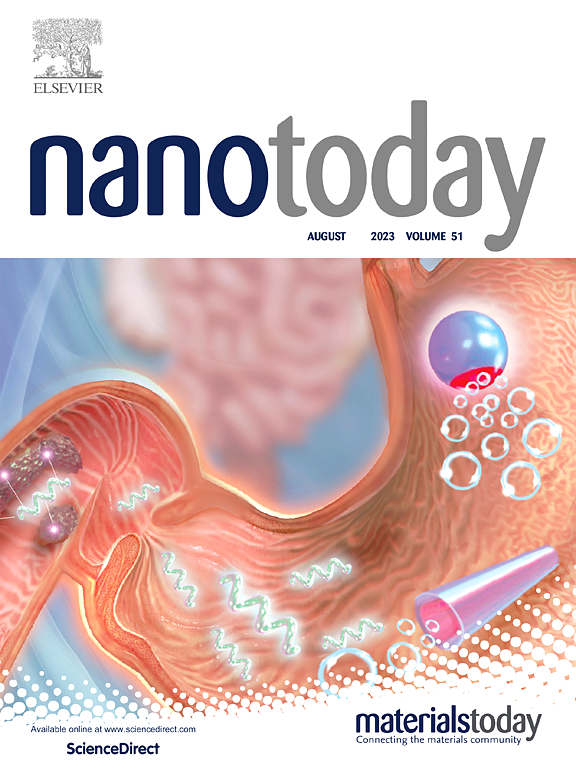Seeing the invisible: Nanoscopy with acoustic AFM
IF 10.9
1区 材料科学
Q1 CHEMISTRY, MULTIDISCIPLINARY
引用次数: 0
Abstract
Acoustic atomic force microscopy (AFM) addresses the limitations of traditional imaging for seeing the invisible subsurface nanofeatures with the advantages of both the noninvasive penetration of ultrasound and the nanoscale resolution of AFM. This review emphasizes key achievements and recent advancements of the acoustic AFM, focusing on improvements in multi-modal excitation, multi-scheme operation, multi-component applications, and multi-parameter imaging. Theoretical algorithms and limitations including amplitude attenuation, frequency shift, phase transition, and energy consumption are analyzed, and discrepancies among models, simulations, and experiments are discussed. The review also examines the applications of acoustic AFM in advanced semiconductor nanodevices, the characterization of functional material properties, and the monitoring of living systems. Results emphasize the potential of integrating ultrasonic AFM with quantum sensing and artificial intelligence to develop refined nanoscale fluctuation models, innovate multi-modal probes, and create high-throughput data processing algorithms. These advancements aim to achieve wide-field, high-throughput, ultra-high spatial-temporal resolution, and real-time dynamic nondestructive monitoring of samples with complex structures and environments, paving the way for the next generation of ultrasonic AFM.
看不见的:声学原子力显微镜的纳米显微镜
声学原子力显微镜(AFM)具有超声的无创穿透和AFM纳米级分辨率的优势,解决了传统成像技术在观察不可见的亚表面纳米特征方面的局限性。本文综述了声学AFM在多模态激励、多方案操作、多组分应用和多参数成像等方面的主要成就和最新进展。分析了理论算法和局限性,包括幅度衰减、频移、相变和能量消耗,并讨论了模型、仿真和实验之间的差异。本文还探讨了声学AFM在先进半导体纳米器件、功能材料特性表征和生命系统监测中的应用。结果强调了超声AFM与量子传感和人工智能相结合的潜力,可以开发精细的纳米尺度波动模型,创新多模态探针,并创建高通量数据处理算法。这些进步旨在实现对复杂结构和环境样品的宽视场、高通量、超高时空分辨率和实时动态无损监测,为下一代超声AFM铺平道路。
本文章由计算机程序翻译,如有差异,请以英文原文为准。
求助全文
约1分钟内获得全文
求助全文
来源期刊

Nano Today
工程技术-材料科学:综合
CiteScore
21.50
自引率
3.40%
发文量
305
审稿时长
40 days
期刊介绍:
Nano Today is a journal dedicated to publishing influential and innovative work in the field of nanoscience and technology. It covers a wide range of subject areas including biomaterials, materials chemistry, materials science, chemistry, bioengineering, biochemistry, genetics and molecular biology, engineering, and nanotechnology. The journal considers articles that inform readers about the latest research, breakthroughs, and topical issues in these fields. It provides comprehensive coverage through a mixture of peer-reviewed articles, research news, and information on key developments. Nano Today is abstracted and indexed in Science Citation Index, Ei Compendex, Embase, Scopus, and INSPEC.
 求助内容:
求助内容: 应助结果提醒方式:
应助结果提醒方式:


